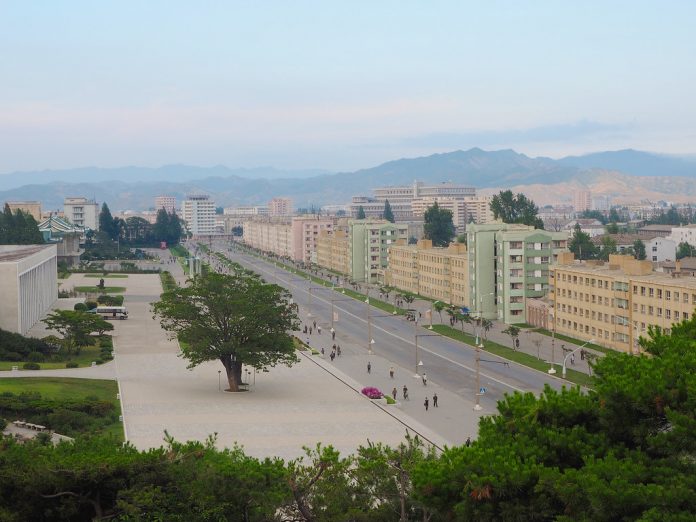Driven by economic hardships, a large number of parents of school-age children shopped at second-hand clothing stores in Hamhung markets before the start of the school year last month, the Daily NK has learned.
Speaking on condition of anonymity, a source in South Hamgyong Province told Daily NK on Monday that “many parents went to used clothing stalls in markets late last month before the start of the new school year on Apr. 1 because they couldn’t afford new clothes or shoes for their children who were entering a new grade or going to school for the first time.”
In North Korea, it is customary for students to wear new clothes and shoes on the first day of the new school year. In particular, students going from kindergarten to elementary school, from elementary school to middle school, or from middle school to high school wear new clothes and shoes and bring new school supplies.
This year, however, the market’s secondhand stalls were busier than ever as school parents unable to afford new items for their children opted to buy cheaper used items instead.
“Many parents can’t even imagine buying new clothes or shoes that cost over KPW 100,000 in the market because they can barely afford to buy a single notebook for their children when earning a living is a struggle,” the source said.
In fact, new clothes or shoes for children cost an average of KPW 50,000 to over 100,000 at Sapo Market or Kumsa Market in Hamhung, but used ones are much cheaper, costing only a few thousand won to KPW 20,000 or 30,000.
According to the source, a Hamhung resident with a child in elementary school said that they had only one child, “so we could dress and feed him well, but we were heartbroken because we couldn’t give him what he needed even though he was going to school.”
She added: “Since it is so hard to make money now, we have a lot of regrets and wonder why we had a child at all if things were going to be so bad.”
Another Hamhung resident said that “our child is entering the third grade of primary school, and he doesn’t have any intact clothes, maybe because he’s a boy and plays rough, and his shoes are too small now. But we couldn’t afford new ones, so we went to the second-hand stall, but we couldn’t find anything in the right size.”
Wealthy parents, on the other hand, buy new school supplies for their children and have school uniforms made of good quality fabric, so it is easy to tell what kind of family a child comes from just by looking at how he or she is dressed.
“Rich families even hire private tutors for their children, so there’s a big qualitative difference in educational opportunities and environment between wealthy homes and poor ones,” the source said. “That being the case, parents who are struggling to even put food on the table feel guilty that they can’t support their children better.”
Translated by David Black. Edited by Robert Lauler.
Daily NK works with a network of sources living in North Korea, China, and elsewhere. Their identities remain anonymous for security reasons. For more information about Daily NK’s network of reporting partners and information-gathering activities, please visit our FAQ page here.
Please send any comments or questions about this article to dailynkenglish@uni-media.net.



















